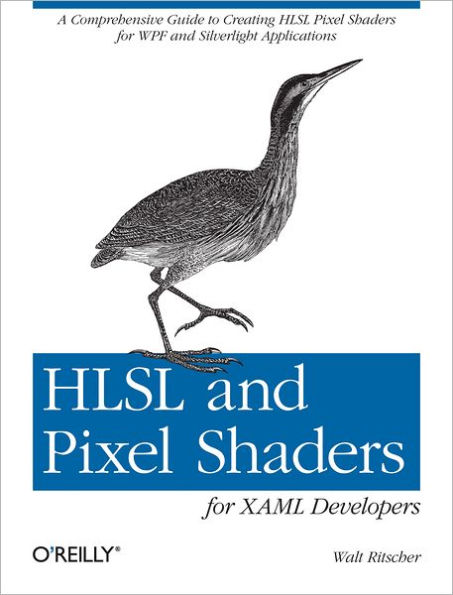Pixel shaders are some of the more powerful graphic tools available for XAML programmers, but shader development bears little resemblance to traditional .NET programming. With this hands-on book, you’ll not only discover how to use existing shaders in your Windows Presentation Foundation (WPF) and Silverlight applications, you’ll also learn how create your own effects with XAML and Microsoft’s HLSL shading language.
In the process, you’ll write, compile, and test custom XAML shaders with the Shazzam Shader Editor, a free utility developed by author Walt Ritscher. The book includes XAML and C# sample code, and Shazzam contains all of the sample shaders discussed.
- Learn how shaders help you extend the GPU’s rendering capabilities
- Explore prevailing shader types, such as color modification, blurring, and spatial transformation
- Get a quick tour of the shader features, and use pre-built effects on image elements in your application
- Examine the XAML ShaderEffect class to understand how WPF and Silverlight use shaders
- Learn about the shader-specific tools available in Visual Studio and Expression Blend
- Get up to speed on HLSL basics and learn how to create a variety of graphics effects
Pixel shaders are some of the more powerful graphic tools available for XAML programmers, but shader development bears little resemblance to traditional .NET programming. With this hands-on book, you’ll not only discover how to use existing shaders in your Windows Presentation Foundation (WPF) and Silverlight applications, you’ll also learn how create your own effects with XAML and Microsoft’s HLSL shading language.
In the process, you’ll write, compile, and test custom XAML shaders with the Shazzam Shader Editor, a free utility developed by author Walt Ritscher. The book includes XAML and C# sample code, and Shazzam contains all of the sample shaders discussed.
- Learn how shaders help you extend the GPU’s rendering capabilities
- Explore prevailing shader types, such as color modification, blurring, and spatial transformation
- Get a quick tour of the shader features, and use pre-built effects on image elements in your application
- Examine the XAML ShaderEffect class to understand how WPF and Silverlight use shaders
- Learn about the shader-specific tools available in Visual Studio and Expression Blend
- Get up to speed on HLSL basics and learn how to create a variety of graphics effects

HLSL and Pixel Shaders for XAML Developers: A Comprehensive Guide to Creating HLSL Pixel Shaders for WPF and Silverlight Applications
204
HLSL and Pixel Shaders for XAML Developers: A Comprehensive Guide to Creating HLSL Pixel Shaders for WPF and Silverlight Applications
204Related collections and offers

Product Details
| ISBN-13: | 9781449325015 |
|---|---|
| Publisher: | O'Reilly Media, Incorporated |
| Publication date: | 07/03/2012 |
| Sold by: | Barnes & Noble |
| Format: | eBook |
| Pages: | 204 |
| File size: | 12 MB |
| Note: | This product may take a few minutes to download. |
